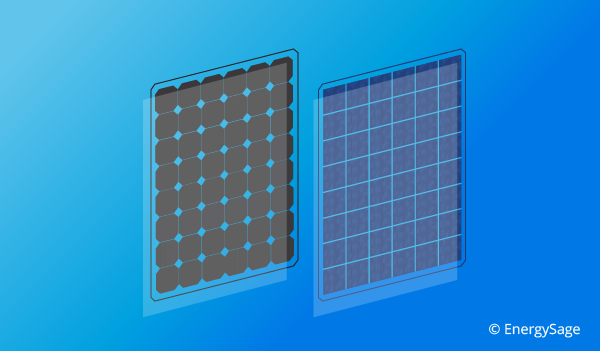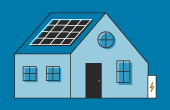The California solar market is facing one of its biggest periods of upheaval ever and the next few months will set the fate of the industry for the next decade as the state decides the future of “net metering”. The stakes could not be higher for this 75,000 worker, $4 billion industry so let’s take a deeper dive into the forces bombarding the industry, the trials ahead, and how the industry can defend itself to make it through this challenging time.
Continue readingDIY solar panels: can you install solar panels yourself?
Going solar has major financial benefits: it reduces your monthly electricity costs and can even increase the value of your home. Incentives like the federal tax credit for solar can reduce your net cost by 26 percent, but solar is still a big investment, and the price tag can result in sticker shock. To save money, it’s no surprise that many homeowners are considering DIY and asking themselves “can you install solar panels yourself?” Simply put, yes you can—but, there are some advantages and disadvantages of doing it alone. For instance, it may not be the best route to take if you still need to rely on some utility energy, and installation can be very complicated without professional experience. In this article, we’ll break down the top pros and cons that you need to know about do-it-yourself solar panel systems before making a decision.
Continue readingSolar news: October 15th, 2021
In this week’s news round-up, we discuss an important goal set by the Department of Energy (DOE) and a new startup which aims to help accelerate solar panel recycling throughout the United States.
Continue readingShould your business invest in energy storage?
Energy storage is a great option for commercial properties looking to cut energy costs and improve reliability. With storage prices decreasing in recent years, state and federal incentives to install storage, and increasingly complex–and pricey!–electricity rate schedules for businesses, there’s never been a better time to install solar and storage at your business. To help you decide whether storage is right for your organization, here’s a rundown of how storage works and the primary reasons that businesses are installing storage.
Continue readingHow to compare solar panel warranties in 2022
If you think comparing solar panel warranties is confusing, you’re certainly not alone. Even if you take the time to sift through pages of dense documentation, understanding the differences in warranties across the various manufacturers can feel like comparing apples to oranges! We sat down with some of the top solar panel companies to better understand their individual warranties, and to get a feel for the key warranty factors to be on the look out for. To help you compare different company’s warranties, we developed a scoring system that allows you to compare different options head to head. In this article, we’ll explain our scoring system and break down how each of the companies stack up against one another.
Continue readingWhat are solar panels made of? Cell types and parts of a solar panel explained
Solar has entered the mainstream as the world’s cheapest energy source, leaving many people wondering how solar PV can be so efficient and inexpensive while still providing “green” energy. Answering that question means understanding how solar energy work, how solar panels are manufactured and what the parts of a solar panel are. Most panels available on the market are made of monocrystalline, polycrystalline, or thin film (“amorphous”) silicon. In this article, we’ll explain the different ways solar cells are made and what parts are required to manufacture a solar panel.
Continue readingWe read AXITEC’s warranty so you don’t have to
Let’s face it – warranties aren’t the easiest (or most gripping) documents to read. There are often a lot of details and fine print included that can be hard to digest, leaving many to wonder: what does the warranty actually cover? Am I vulnerable? Anything I might be missing?
To make it as easy as possible, we’ve read warranty documents for the top solar equipment manufacturers–and talked to them to confirm what is and isn’t included–and plan to point out the most important aspects of each in a series of articles. This article reviews the warranty offering of AXITEC, a German-engineered solar panel manufacturer with locations around the world.
Continue reading
Monocrystalline and polycrystalline solar panels: what you need to know
When you evaluate solar panels for your photovoltaic (PV) system, you will encounter two main categories of panel options: monocrystalline solar panels (mono) and polycrystalline solar panels (poly). Both types of panels produce energy from the sun, but there are some key differences to be aware of.
Continue readingHow long do solar panels last? Solar panel lifespan explained
The industry standard for a solar panel’s productive lifetime is 25-30 years. However, a solar panel won’t die after 25-30 years, rather, their output will decrease a significant amount below what the manufacturer projected. It’s hard to understand the upfront cost of going solar without knowing how long you can expect your rooftop panels to produce ample energy. Your solar panels will be able to offset your electricity use for decades, but it is also important to understand industry projections and degradation rates.
Continue readingWhat you need to know about smart plugs and energy management
Solar and storage are just two components of a fully energized home. Energy management is the next most important piece of the puzzle: to truly understand and manage how your home uses electricity, you also need consumption monitors with built-in controls. Consumption monitors can tell you what is using electricity, how much each device in your home uses, and ultimately how it costs to run each device in your home; meanwhile, the controls allow you to act on that information, shutting off–or scheduling–certain devices at certain times.
Smart plugs are a great, easy and inexpensive first foray into energy management for your home: just plug them into any device in your home and start receiving actionable insights about how your home uses energy. In this article, we’ll explain what you need to know about smart plugs.
Continue reading




